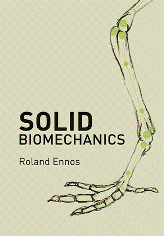Solid Biomechanics
 Roland Ennos
Roland Ennos
Princeton University Press, £44.95
The mechanical properties of living organisms and materials derived from living tissues have been studied for centuries. Da Vinci used bird wing design in flight studies and Galileo investigated the strength of hollow cylinders using bone.
There has been rapid growth in the field of biomechanics since the latter half of the last century and in the past few decades there has been heightened interest in reverse engineering, such as resealable glue development inspired by the hair structures on gecko feet, or improved rubber based on dragonfly wing shock absorbers.
Roland Ennos draws on examples from empirical, comparative and biomimetics research, while giving uncomplicated advice for readers interested in performing their own investigations. The introductory nature of Solid Biomechanics is complemented with clear diagrams, illustrations and a limited mathematical emphasis.
The initial section is on simple mechanics and elasticity, which perhaps has room for more details on failure and fatigue. Part two is an overview of biological structural polymers, composites and ceramics. Part three is dedicated to structures that maintain stability under different forces, including a chapter on hydrostatic skeletons.
The next section details the mechanical interactions between organisms and their surroundings, such as attachments and defence mechanisms in plants. The final part outlines some possible future developments in biomechanics and biomimetics.
This easily readable book, written as a primer for undergraduates on both biological and engineering courses, provides a wide range of examples that illustrate the different mechanical properties of biological materials and various mechanisms and adaptations of a host of floral and faunal organisms.


